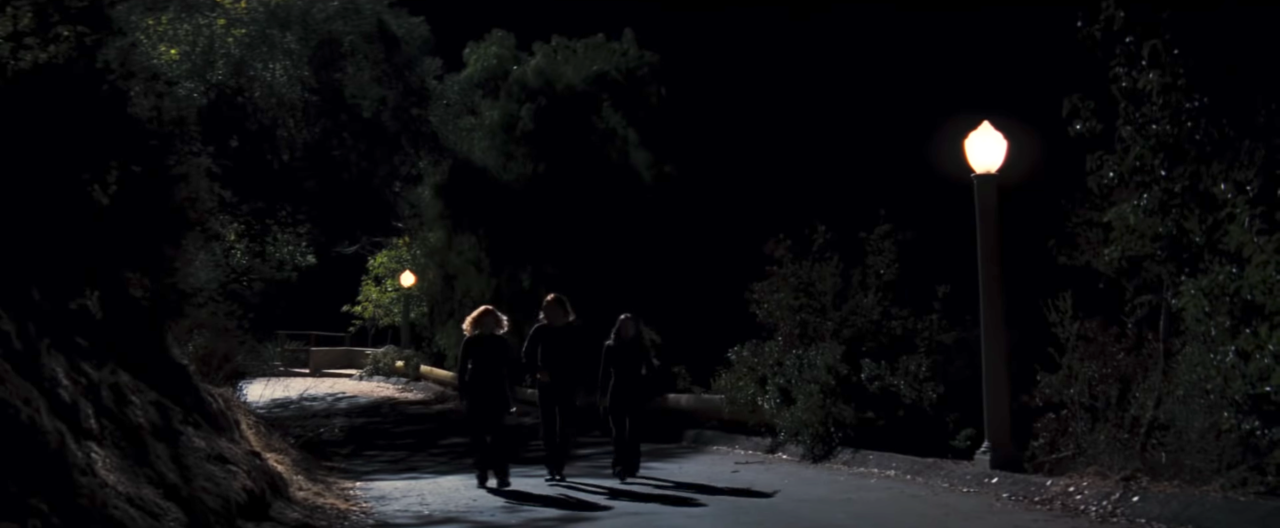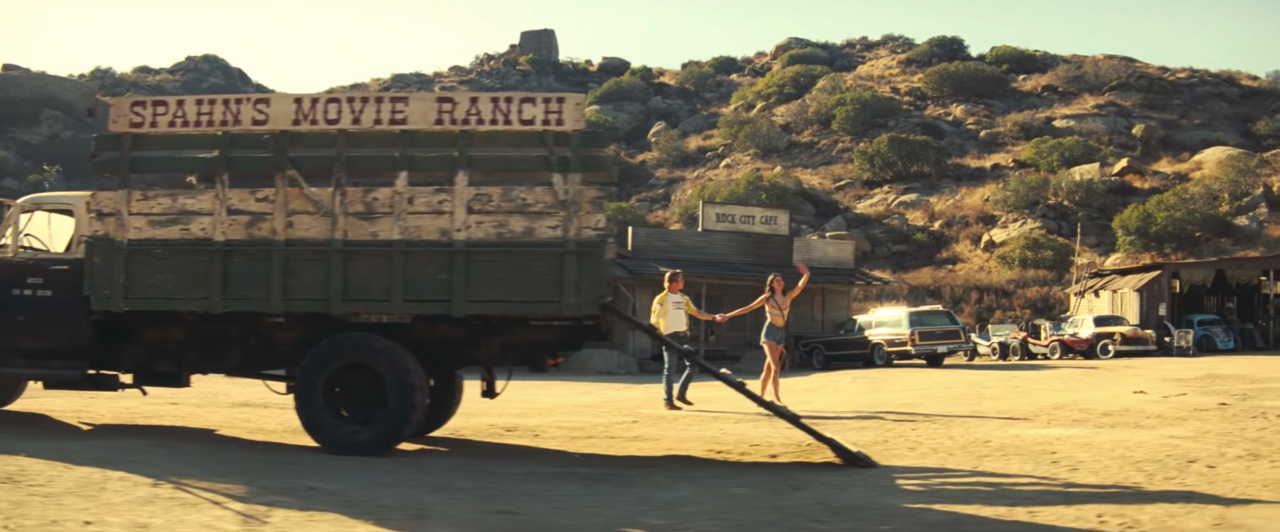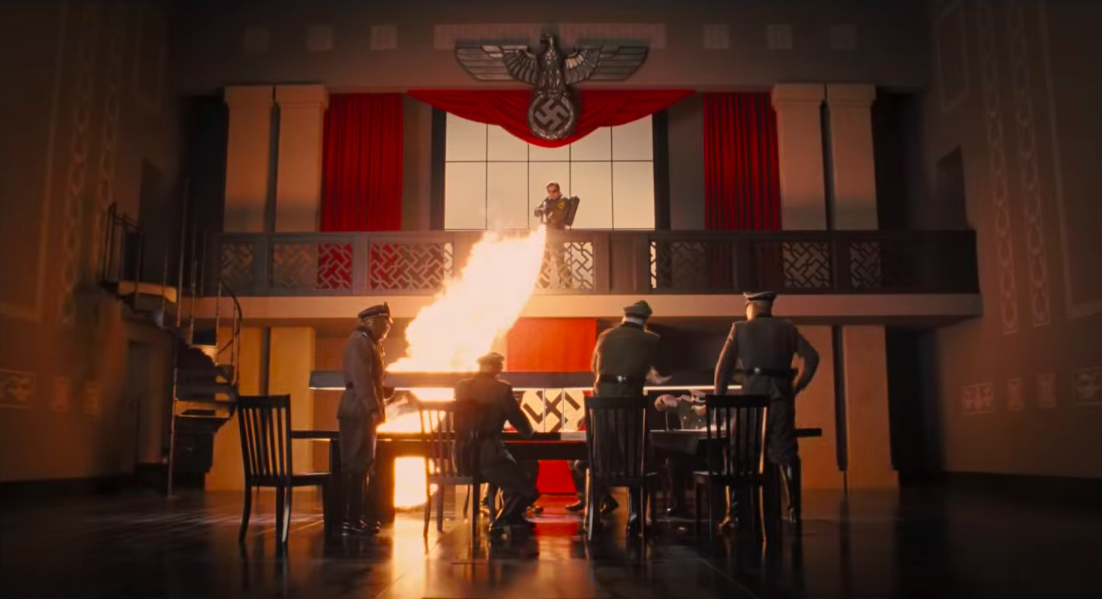Once Upon a Time in Hollywood, the latest movie from iconic filmmaker Quentin Tarantino, shines a spotlight on a very specific era in Hollywood: the late 1960s. It's a time during which Tarantino was a young kid, but one he seems to almost worship in this movie, which stars Leonardo DiCaprio and Brad Pitt as a washed-up TV cowboy and his stunt double/best friend. The two live next door to Roman Polanski and Sharon Tate's house in the Hollywood hills--the house where, on August 9, 1969, members of the Manson family cult murdered the latter, her unborn child, and three of her friends.
That's how it happened in real life--but events in Once Upon a Time in Hollywood play out slightly differently. This is your final spoiler warning.
The Manson cult's portrayal in the movie is, largely, accurate. The "family" really did occupy Spahn Ranch, where an aging George Spahn let them run amok in exchange for their help with operations. Tourists getting horseback rides at the ranch seems entirely plausible. And the cultists who set out to do "the devil's work" that night are accurately portrayed in the movie as well, including Tex Watson, Susan Atkins, Linda Kasabian, and Patricia Krenwinkel.
However, there's one key difference in the movie that causes the whole ordeal to end on an entirely different, and much happier, note during the film's climax: The reality is that DiCaprio and Pitt's characters, Rick Dalton and Cliff Booth, are entirely fictional. Everything that involves them never happened, including Booth's visit to Spahn Ranch, Dalton's haranguing of the cultists as their loud car idled in front of his house, and the fight with the cultists at the end.
In real life, Tex and his cohorts entered Tate and Polanski's house and murdered Tate, who was eight and a half months pregnant, along with her friends Jay Sebring, Wojciech Frykowski, and Abigail Folger (of the Folgers coffee family).

In the movie, Kasabian (played by Stranger Things Season 3's Maya Hawke) abandons her co-conspirators after their encounter with Dalton in the cul-de-sac. The remaining three cultists enter Dalton's house--not Tate's--where Booth recognizes them as the "hippies" he encountered at Spahn Ranch. Booth sics his very good dog Brandy on Tex, and manages to (brutally and with extreme conviction) kill or maim all three. When the last cultist stumbles outside into Dalton's pool, blindly firing her gun, Dalton retrieves his flamethrower from the shed and roasts her.
In the end, Tate and co. remain safe and sound next door, and Tate finally invites Dalton in for a drink. Booth has a minor stab wound from which he'll recover. Brandy will receive lots of treats, scritches, and pats. Presumably, they all become friends and live happily ever after.

Even as Once Upon spends ample time in asides and flashbacks watching Dalton shoot Westerns and seeing Booth beat up Bruce Lee, it deftly builds tension. By the time the movie actually gets to that fateful night, you might even realize that you don't actually want to see what you fear is about to happen. In that way, OUATIH's altered ending is a relief.
Once Upon a Time in Hollywood's ending is not unlike that of Inglourious Basterds, Tarantino's 2009 film in which a ragtag squad of scrappy Jewish marines succeed in assassinating Hitler along with most of the Nazi leadership in one spectacular and supremely unexpected climactic scene. OUATIH is built on the dread of what the audience knows is coming--the Tate murders--much like first-time viewers expected Inglourious Basterds' assassination plot to fail.

The comparison is overt. Tarantino even acknowledges it himself when, during OUATIH, Dalton thinks back on his starring role in the fictional film The 14 Fists of McCluskey, in which he torches a room full of Nazi generals from a balcony--which is similar enough to the actual climax of Basterds that it's clearly deliberate.
But there's more to this ending than mere shock value and wish fulfillment. In case you couldn't tell from its title, it bears pointing out that Once Upon a Time in Hollywood is a fairy tale--one about this specific era in Hollywood. It's a glorification of figures like Dalton and Booth, who, despite feeling used up, clearly have real, not superficial, value--or so Tarantino wants to convey. The point of this movie seems to be that this really was Hollywood's golden age, and Tarantino appears to wish it had never ended. Fairy tales have happy endings, and that's why, in the film's version of events, a couple of old TV cowboys prevent the Tate murder from taking place, ensuring the golden age could live on.
